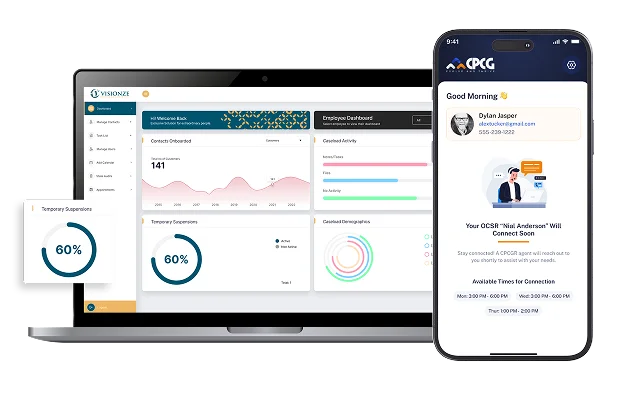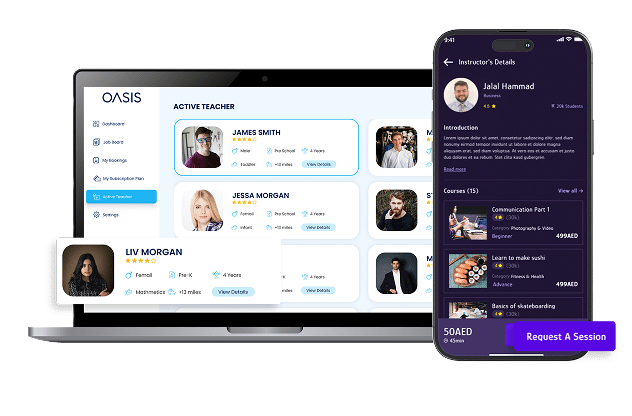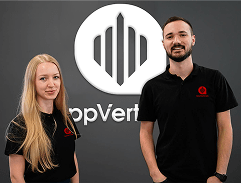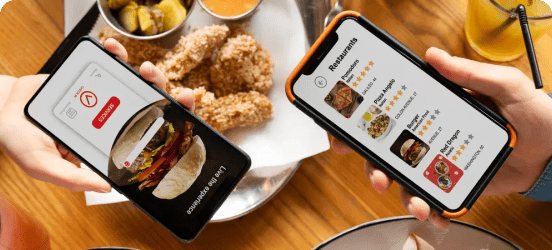Instagram has redefined digital interaction by emphasizing visual content through photos, videos, stories, and reels. Its influence stretches beyond personal use; businesses and influencers now rely heavily on Instagram for marketing, brand visibility, and user engagement. The potential for viral growth, monetization, and customer interaction is substantial. Creating an app like Instagram presents a significant opportunity for startups and entrepreneurs looking to enter the social media market. Partnering with an experienced app development company can transform this opportunity into a successful product.
This guide explores the key aspects of developing an app like Instagram, whether for Android, iOS, or a cross-platform solution.
Key Features of an App Like Instagram
With over 2 billion monthly active users, Instagram’s appeal comes from a combination of core features that drive engagement. Understanding these is essential for any startup aiming to develop a similar platform.
Photo and Video Sharing
High-quality media sharing forms the foundation of Instagram’s success. Your app should allow users to upload photos and videos effortlessly, with options for cropping, resizing, and editing while maintaining speed and quality.
Filters and Editing Tools
Filters and editing options encourage creativity and enhance user satisfaction. Including built-in editing tools allows users to refine their content without relying on external apps.
Stories, Reels, and Live Streaming
Temporary content like stories and short-form videos like reels drives daily engagement. Providing similar features ensures that users remain active and connected. Live streaming adds another layer of interactivity, encouraging real-time communication.
Social Interaction Features
Likes, comments, and direct messaging are essential for user engagement. Real-time interaction keeps users involved and encourages more frequent app visits.
Discoverability Through Recommendations
A recommendation system, including trending content and hashtags, helps users explore relevant posts. Hashtags broaden reach, while a well-structured feed enhances engagement and community building.
Push Notifications
Timely notifications for likes, comments, or messages keep users active on the platform. Notifications should strike a balance between engaging users and avoiding fatigue.
User Profiles and Follower Networks
Allowing users to build profiles, follow others, and manage their networks is crucial. A transparent follower/following system encourages community growth and repeated interactions.
Why These Features Matter
Every feature contributes to improving user experience, retention, and interaction. Personalization through feeds, real-time alerts, and content discovery strengthens engagement, making users return frequently.
Bring your social media vision to life with AppVerticals
Partner with our experts to build an app like Instagram that engages users and scales effortlessly
Get in touch today
10-Step Guide to Creating an App Like Instagram
1. Understanding the Target Audience
Researching your audience is critical. Instagram’s primary users are 18-34 years old, mobile-first, and drawn to high-quality visuals. Conduct surveys, interviews, and competitor analysis to identify user expectations. Observe popular apps such as TikTok, Snapchat, and Pinterest for insights into preferred content formats, including short videos and interactive stories.
2. UI/UX Design
A user-friendly and attractive interface is essential for retention. Focus on minimalistic design, mobile responsiveness, balanced typography, and intuitive navigation. Optimize speed for media-heavy interactions and reduce friction in content sharing. Personalization features like customized feeds improve user engagement and satisfaction.
3. Technology Stack Selection
Choosing the right technologies will influence performance, scalability, and user experience.
-
Frontend: React Native for cross-platform development or Swift/Kotlin for native performance.
-
Backend: Node.js for real-time operations, Python (Django) for rapid development, or Ruby on Rails for scalability.
-
Database: PostgreSQL, MongoDB, or Firebase for flexible and large-scale data management.
-
Media Handling: Cloudinary and AWS S3 for image/video storage and editing.
-
Cloud Solutions: AWS or Google Cloud for scalable hosting and content delivery.
4. Building Core Features
Include essential features such as photo/video uploads, editing tools, stories, reels, follower networks, likes, comments, and content discovery systems. Optimize the app for smooth media management and interactive engagement.
5. Backend Development
Implement secure authentication with OAuth, Google Sign-In, or Facebook Login. Token-based authentication and data encryption protect user privacy. Handle large-scale media uploads through compression and content delivery networks. Use cloud storage solutions to manage high volumes of data efficiently.
6. Monetization Strategies
Consider multiple revenue streams:
-
In-app advertising through banner ads, sponsored posts, and targeted campaigns.
-
Premium features or subscription models offering exclusive filters, content options, or customization.
-
Influencer partnerships and brand collaborations for sponsored content and marketplace opportunities.
7. Security and Privacy
Compliance with regulations such as GDPR and CCPA is mandatory. Implement two-factor authentication, encrypted communication, and content moderation tools to prevent abuse, cyberbullying, and harmful posts.
8. Testing and Iteration
Monitor user behavior using analytics for daily active users, session duration, and feature adoption. Conduct A/B testing to refine design, features, and user experience. Regular updates based on feedback maintain engagement and keep the app competitive.
9. Launch Strategies
Pre-launch marketing through teaser campaigns, social media promotion, and email lists creates anticipation. Post-launch, leverage user-generated content and influencer endorsements to attract users. Offer referral programs and promotions to sustain growth.
10. App Store Optimization and Continuous Engagement
Optimize the app for search engines and app stores with relevant keywords. Highlight unique features and user benefits. Maintain engagement through regular campaigns, content promotions, and feature announcements.
Estimated Development Cost
| Development Stage |
Estimated Hours |
Cost Range (USD) |
| Planning & Research |
40-80 |
$2,000 – $6,000 |
| Design (UI/UX) |
100-200 |
$5,000 – $15,000 |
| Frontend Development |
300-500 |
$15,000 – $50,000 |
| Backend Development |
500-700 |
$25,000 – $70,000 |
| Core Features |
300-500 |
$20,000 – $60,000 |
| Social Features |
250-400 |
$15,000 – $50,000 |
| Discovery & Search Features |
250-400 |
$20,000 – $50,000 |
| Push Notifications |
50-100 |
$3,000 – $8,000 |
| Security & Privacy |
150-200 |
$10,000 – $20,000 |
| Testing & QA |
200-300 |
$10,000 – $30,000 |
| Launch & Deployment |
50-100 |
$2,000 – $5,000 |
| Ongoing Maintenance |
Monthly |
$2,000 – $10,000 |
Total Estimated Cost: Minimum $129,000 – Average $374,000
Costs vary depending on the complexity, location of the development team, and quality of the technology stack.
Wrapping it Up
Developing an app like Instagram requires careful planning, feature prioritization, and a strong technical foundation. From understanding your audience to implementing essential features and maintaining engagement, each step influences the app’s success. Startups and businesses that invest in a comprehensive development process can create a social media platform capable of attracting and retaining a large user base.
Partner with an experienced app development company to bring your vision of an App like Instagram to life.
Looking to create a feature-rich social media platform?
AppVerticals delivers end-to-end development for apps like Instagram, from concept to launch.
Connect with us now
 About Us
About Us Locations
Locations Case Studies
Case Studies Careers
Careers Contact Us
Contact Us




 Blogs
Blogs Podcasts
Podcasts Cost Calculators
Cost Calculators




